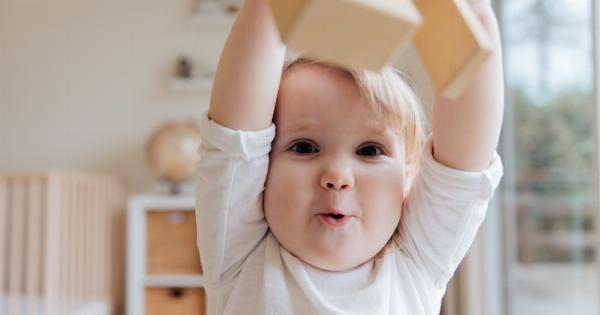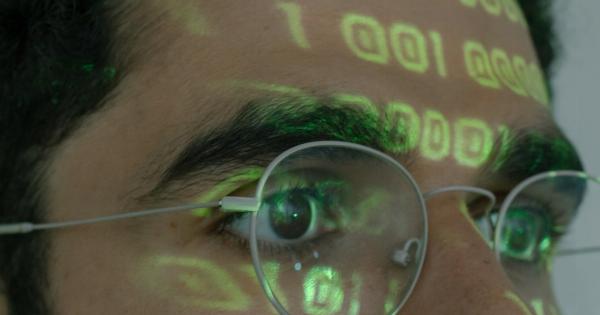As parents, it is our responsibility to ensure the safety and well-being of our children. While we pay close attention to their physical safety, such as using car seats or baby-proofing our homes, we often overlook their eye safety.
The eyes are delicate organs that play a crucial role in a child’s development. Therefore, it is essential to be aware of activities that can potentially harm their eyes and take necessary precautions to prevent any eye injuries or long-term damage.
1. Allowing Excessive Screen Time
In today’s digital age, children have easy access to various electronic devices such as smartphones, tablets, and computers.
While these devices offer educational and entertainment opportunities, excessive screen time can have detrimental effects on their eyesight. Prolonged exposure to screens can cause eye strain, dryness, blurred vision, and even increase the risk of developing nearsightedness. It is essential to encourage breaks and limit the duration of screen time to safeguard their eye health.
2. Ignoring the Need for Protective Eyewear
Children are naturally curious and often engage in activities that may pose a risk to their eyes. Whether it’s playing sports, cycling, or woodworking, eye injuries can occur without warning.
Parents should always prioritize the use of appropriate protective eyewear, such as safety glasses or goggles, to prevent eye trauma. These protective gears act as a shield against flying objects, sharp particles, chemicals, or harmful UV rays, reducing the risk of eye injuries significantly.
3. Using Incorrect Prescription Glasses
If your child requires prescription glasses, it is crucial to ensure that they wear the correct ones. Incorrect glasses may provide inadequate vision correction, leading to eye strain and discomfort.
Regular eye examinations will help identify any changes in your child’s prescription and ensure they have the right eyeglasses. Additionally, be cautious when purchasing glasses online without professional guidance, as inaccurate measurements or incorrect lenses can harm their eyesight.
4. Allowing Contact Sports without Eye Protection
Engaging in contact sports such as football, basketball, or martial arts can be great for your child’s physical and social development. However, these sports also carry a higher risk of eye injuries.
Parents should ensure that their children wear appropriate sports eyewear specifically designed for the respective activities. Sports goggles with polycarbonate lenses offer impact resistance and can prevent eye injuries caused by accidental hits, collisions, or flying objects.
5. Exposure to Harsh Sunlight without Sunglasses
Just like our skin, our eyes are susceptible to damage from the sun’s harmful ultraviolet (UV) rays. Prolonged exposure to UV radiation can lead to various eye problems, including cataracts, macular degeneration, and photokeratitis.
Therefore, it is crucial to protect your child’s eyes by ensuring they wear sunglasses that provide 100% UV protection. Look for sunglasses labeled with UV400 or with the American Optometric Association’s “UV Protection” seal to ensure adequate protection.
6. Allowing Unsafe Toy Usage
Toys play an essential role in a child’s development and entertainment. However, certain toys can pose a significant risk to their eye safety.
Toys with sharp edges, projectiles, or laser pointers can cause eye injuries if mishandled or used improperly. Be cautious when selecting toys for your child and ensure they are age-appropriate and meet safety standards. Supervision during playtime is crucial to prevent any accidents that may harm their eyes.
7. Overlooking Eye Hygiene
Teaching your children good eye hygiene habits from a young age is vital. Encourage them to frequently wash their hands before touching their eyes, whether it’s inserting contact lenses, applying eye drops, or rubbing their eyes.
Avoid sharing eye care products, such as towels or makeup, to minimize the risk of eye infections. Additionally, educate your children about the importance of avoid rubbing their eyes excessively, as it can lead to corneal damage or eye infections.
8. Exposure to Chemicals without Eye Protection
Around the house, there are various cleaning products, detergents, and chemicals that can be hazardous if they come into contact with the eyes.
It is crucial to keep these substances out of reach of children and emphasize the importance of wearing proper eye protection when handling or being in close proximity to such chemicals. Accidental splashes or spills can cause severe eye irritation, burns, or even damage to the cornea.
9. Neglecting Regular Eye Check-ups
Regular eye examinations are essential for monitoring your child’s eye health. An eye care professional can detect vision problems, eye diseases, or complications at an early stage.
Do not overlook the importance of routine eye check-ups, even if your child has not exhibited any signs or symptoms of vision concerns. Early detection and timely intervention can help prevent long-term vision issues and ensure optimal eye health for your child.
10. Allowing the Use of Age-Inappropriate Technology
While technology can be beneficial for educational purposes, it is crucial to ensure your child is using age-appropriate devices and applications.
Young children may not have developed the necessary hand-eye coordination or visual skills required to engage with certain technologies effectively. Using technology unsuitable for their age can strain their eyes and hinder their visual development. It’s essential to consider age recommendations and consult with experts when introducing new technologies to your child.
Conclusion
Prioritizing children’s eye safety is crucial for their overall well-being and development.
By being aware of activities that can potentially harm their eyes and taking necessary precautions, parents can help prevent eye injuries and long-term vision problems. Encourage safe habits, promote the use of protective eyewear, limit screen time, and prioritize regular eye check-ups to ensure your child’s eyes remain healthy and their vision remains unimpeded.































